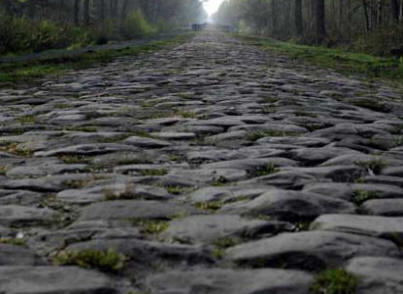What is the most common type of puncture in this race?
Sharp stones tearing the tire?
Pinch flats? (yes, it is possible on tubulars)
The usual road debris like glass shards? (from riding in the ditch)
It seems to me from reading the pre-race reconnaissance news coverage that teams were optimizing their tire choice and pressure based on speed and road feel. But post race, most riders complaints were about punctures, usually multiple. Seems there is room for some tech advancement in this area.
Sharp stones tearing the tire?
Pinch flats? (yes, it is possible on tubulars)
The usual road debris like glass shards? (from riding in the ditch)
It seems to me from reading the pre-race reconnaissance news coverage that teams were optimizing their tire choice and pressure based on speed and road feel. But post race, most riders complaints were about punctures, usually multiple. Seems there is room for some tech advancement in this area.










